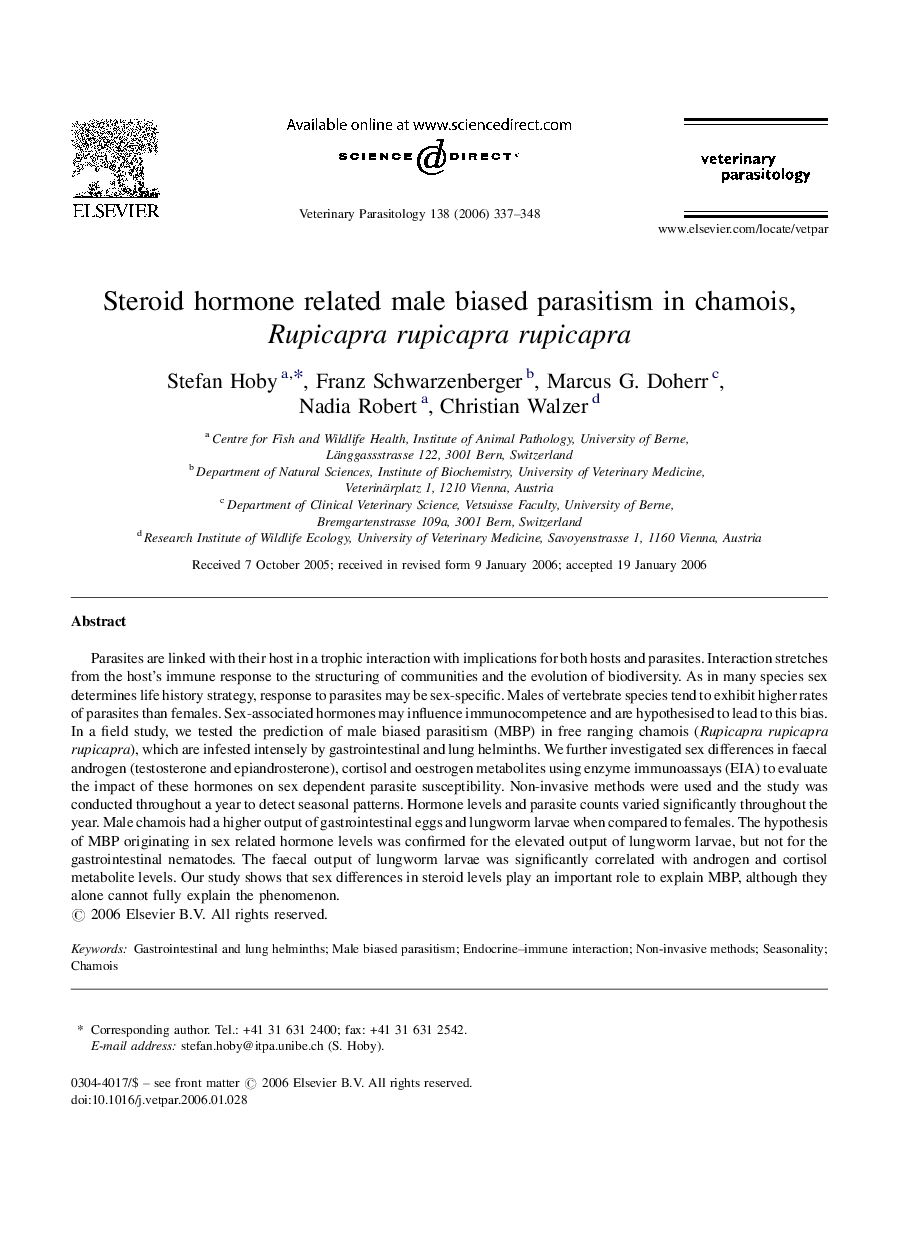| کد مقاله | کد نشریه | سال انتشار | مقاله انگلیسی | نسخه تمام متن |
|---|---|---|---|---|
| 2472622 | 1555795 | 2006 | 12 صفحه PDF | دانلود رایگان |

Parasites are linked with their host in a trophic interaction with implications for both hosts and parasites. Interaction stretches from the host's immune response to the structuring of communities and the evolution of biodiversity. As in many species sex determines life history strategy, response to parasites may be sex-specific. Males of vertebrate species tend to exhibit higher rates of parasites than females. Sex-associated hormones may influence immunocompetence and are hypothesised to lead to this bias. In a field study, we tested the prediction of male biased parasitism (MBP) in free ranging chamois (Rupicapra rupicapra rupicapra), which are infested intensely by gastrointestinal and lung helminths. We further investigated sex differences in faecal androgen (testosterone and epiandrosterone), cortisol and oestrogen metabolites using enzyme immunoassays (EIA) to evaluate the impact of these hormones on sex dependent parasite susceptibility. Non-invasive methods were used and the study was conducted throughout a year to detect seasonal patterns. Hormone levels and parasite counts varied significantly throughout the year. Male chamois had a higher output of gastrointestinal eggs and lungworm larvae when compared to females. The hypothesis of MBP originating in sex related hormone levels was confirmed for the elevated output of lungworm larvae, but not for the gastrointestinal nematodes. The faecal output of lungworm larvae was significantly correlated with androgen and cortisol metabolite levels. Our study shows that sex differences in steroid levels play an important role to explain MBP, although they alone cannot fully explain the phenomenon.
Journal: Veterinary Parasitology - Volume 138, Issues 3–4, 15 June 2006, Pages 337–348